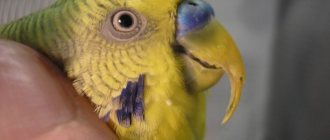Any pet requires special attention and care. This applies not only to cats and dogs, but also to hamsters. When purchasing such a rodent, it is worth studying information about the animal. At the same time, it is important to know not only the methods of care, but also what diseases hamsters suffer from. This will avoid many problems in the future. Particular attention is paid to the pet’s diet, methods of preventing diseases, and so on. But in some cases, health problems still arise in the animal. What to do if your hamster sneezes? How dangerous is this?
It is worth considering that sneezing itself is a natural process. This is not dangerous for the animal. After all, the reason may be hidden not only in the pet’s illness, but also in the presence of an external irritant. Also, do not forget that sneezing in such animals varies. So, what do hamsters get sick with, and how does it manifest itself?
Constant or short-term sneezing
Before answering the question of what to do if a hamster sneezes, you should pay attention to the frequency of this symptom. If this happens once or twice, then you should not think about the disease. In this case, nothing bad happens. The reason for this phenomenon may be hidden in dust or in small particles of food that have entered the animal’s respiratory tract.
How do hamster diseases manifest themselves? Symptoms and treatment of diseases of these animals are interrelated. A wet nose, apathy, lethargy, oily hair, various types of discharge from the eyes, and aggression may indicate a health problem. If such signs are absent, then there is no point in worrying, since the animal is healthy.
But just in case, you should make sure that your pet’s home is not in a draft and that the bedding in it is dry. If a hamster constantly sneezes, this may indicate the development of a disease in the animal. In this case, it is worth showing him to the veterinarian.
Colds
Colds are a common illness for rodents. It can appear in a hamster if the cage is in a draft or one of the household members is sick with the flu.
To avoid unpleasant consequences and not infect your pet, your mouth and nose should be covered with a bandage when feeding and direct contact with it. If you don't dry your hamster well after bathing, he may become hypothermic.
The main symptoms of acute viral respiratory infection and colds in hamsters include:
- A wet nose and scratching it with paws.
- Constant sneezing.
- Labored breathing.
- Aggressive behavior or lethargy and drowsiness.
- Decreased appetite.
When the first signs of illness appear, you should immediately remove the cage from the draft and ensure that the hamster does not become overcooled. The temperature in the room should not be less than twenty-five degrees.
Note: mild symptoms can be treated at home with chamomile tea and vitamins that strengthen the immune system, purchased from a veterinarian, for several days. If a hamster coughs during illness, the disease is progressing.
Sneezing as a manifestation of allergies
What to do if your hamster sneezes? First of all, you should pay attention to his diet. Perhaps the animal has an allergy. Most often, this disease occurs as a result of the use of a certain substance. After all, many foods are prohibited for hamsters. This list includes exotic fruits, flour, salty, spicy and sweet. New foods should be introduced into the animal’s diet with caution. After the first feeding, you need to observe the rodent. If the animal’s behavior and appearance have not changed, then the product can be introduced into its diet.
It is worth considering that an allergic reaction can occur not only to natural products, but also to dry food. Therefore, it is necessary to consult with specialists when choosing such food. Indeed, often, in order to save money, bad, unrefined, practically unground and unwashed seeds and grains are added to such compositions.
Allergy is a rather complex disease that can manifest itself several days after exposure to the allergen. In addition, the provoking factor can gradually accumulate in the pet’s body. In this case, the disease may appear even later. It is not recommended to give your pet allergy medications on your own. Only a veterinarian can prescribe them. In addition, a specialist will help you create the right diet.
Why does a hamster sneeze
Sneezing is a protective reaction of the body aimed at removing mucus, dust and other irritating factors from the upper respiratory tract through a sharp exhalation.
The reasons for this reaction in hamsters can be:
- Hypothermia
- Infectious diseases
- Reaction to any allergens
Often sneezing is accompanied by the squeaking of a domestic rodent and is a symptom of the following diseases:
- SARS
- cold
- rhinitis
- bronchitis
- pneumonia
- allergy.
Allergic reactions in hamsters most often occur to food and household chemicals.
Pay attention to the cell
If your hamster is constantly sneezing, then special attention should be paid to the bedding. After all, allergies can manifest themselves not only to foods. You should not use newspapers for bedding. Printing ink contains many chemical components that can adversely affect your pet's health. It is also not recommended to use scented wipes to clean the cage.
Do not wash your hamster's cage with detergents and cleaners intended for the kitchen or bathroom. After all, such compositions contain coarse synthetic components. Once in the animal's body, they can cause the development of serious diseases. In addition, it is not recommended to spray various hairsprays, eau de toilettes and air fresheners near the cage with the animal. All this negatively affects the health of the pet.
Pneumonia
If a hamster with a cold does not receive proper treatment, it can lead to more severe illnesses, which include bronchitis and pneumonia. These are quite complex diseases that can be fatal. To establish them, you must contact a veterinarian. Using radiography, he will be able to diagnose the disease.
Signs of bronchitis or pneumonia may include:
- Blue tint of mucous membranes.
- Purulent discharge from the eyes and nose.
- Hoarse, labored breathing with whistling or choking.
- Decreased or absent appetite and weight loss.
- Lethargy, weakness, apathy, disorientation.
Bedding material
Often the cause of allergies is wood shavings or sawdust. The main factor that can provoke sneezing in an animal is small dust particles, as well as aromatic oils contained in wood. There is an opinion that sand should be used as bedding. However, such a statement is far from the truth. Veterinarians do not recommend using any fine-grained structures as bedding. Sand dust often penetrates the respiratory tract of animals, causing not only sneezing, but also serious respiratory diseases. For hamsters, it is worth buying special mixtures that will not harm the animal. Such compositions do not cause allergies and do not penetrate the respiratory tract of pets.
Errors during treatment
Many owners of furry balls, when the first signs of a cold appear, try to treat the animal themselves by giving it paracetamol, aspirin or other drugs.
It must be remembered that this cannot be treated! To heal your hamster quickly without harm to his body, you should seek help from a specialist. To prevent the onset of the disease, and not to treat it, it is necessary to carry out prophylaxis twice a year, using homeopathic remedies.
And it will also be useful in the spring, if there is a lack of vitamins, add vitamins to his diet: herbs, vegetables, or give him vitamin drops, which are sold in pet stores.
Cold
What should you do if your hamster sneezes very often and does not look very attractive? In this case, you should contact your veterinarian. It should be noted that colds are common among rodents. At the same time, there are plenty of reasons for the development of the disease. In some situations, an animal can become infected from a person with ARVI. To prevent this from happening, it is worth reducing contact with animals if you have such a disease. It is also recommended to wear a sterile gauze bandage while covering your mouth and nose.
A pet can easily catch a cold during bathing, as well as in cases where, after water procedures, its fur was poorly dried. Despite this, the most common cause of a cold in a hamster remains a cage located in a draft.
What sounds do rodents make?
As many years of observations of lovers of decorative fluffies show, not all rodents squeak. Among all existing decorative breeds, the Syrian hamster is considered the most peaceful and quiet. A hamster of this breed makes strange sounds only in case of acute pain against the background of a serious illness or blatant rage.
As many livestock breeders note, the Djungarian hamster squeaks to express its feelings. Moreover, it is not clear whether these are feelings of joy or some kind of grief. There are often situations when a hamster cries or screams. It is very difficult for an ordinary amateur breeder to determine the cause of such a reaction.
Sound variations:
How to deal with the disease
If the hamster sneezes and squeaks, constantly scratches its nose, you should immediately remove the cage to a place protected from the wind, put in some more napkins, but without drawings or fragrances. The latter are needed so that the pet can hide with them. It is recommended to monitor the room temperature. It should not fall below 25˚С.
How to treat a hamster if he is sneezing due to a cold? In this case, you can give the animal chamomile tea. You can buy it at a veterinary pharmacy. This product contains additional vitamins that can strengthen the animal’s immunity.
If the symptoms are mild, the hamster will recover after a few days. But if your pet constantly sleeps and starts coughing, then you should take him to the vet. In most cases, such signs indicate that the disease is progressing.
Symptoms
Hamsters are clean, and it is difficult to notice a transparent secretion. Indirect signs indicate a runny nose:
- sneezing and snorting;
- difficulty breathing due to swelling of the nasal passages;
- cyanosis of mucous membranes;
- Frequent scratching of the face with paws.
A clear sign of an infectious disease is redness of the conjunctiva and profuse lacrimation. Later, a purulent sticky exudate forms in the corners of the eyes, sticking the eyelids together. Often a painful stye appears on the eyelash edge.
Pneumonia
An advanced cold in a hamster can lead to pneumonia. This can happen within one day. Therefore, it is important to show your pet to a veterinarian in a timely manner. Pneumonia is a serious disease for rodents that can only be diagnosed using radiography. In general, the signs of such a disease in hamsters include the following symptoms:
- disorientation of the animal in space;
- signs of suffocation;
- breathing is difficult and wheezing is heard;
- suppuration of the eyes;
- weight loss.
Hamsters with this disease begin to squeak and sneeze. This indicates that their body is weakened. In case of pneumonia, the veterinarian may prescribe the animal a course of antibiotics, warming, and diuretics. If drug therapy is not started in time, the hamster may die.
Rhinitis
Inflammation of the nasal mucosa due to hypothermia leads to a runny nose in a hamster. And also rhinitis can be allergic. In such cases, its appearance is provoked by dust contained in the bedding or filler.
Signs of rhinitis include:
- Discharge from the nasal passages.
- Sneezing.
- Difficulty breathing.
Since the symptoms of a runny nose closely resemble those of pneumonia, only a veterinarian should make a diagnosis. Natural preparations are used for treatment; in some cases, inhalations will be needed. It is imperative to get rid of the cause of the disease.











